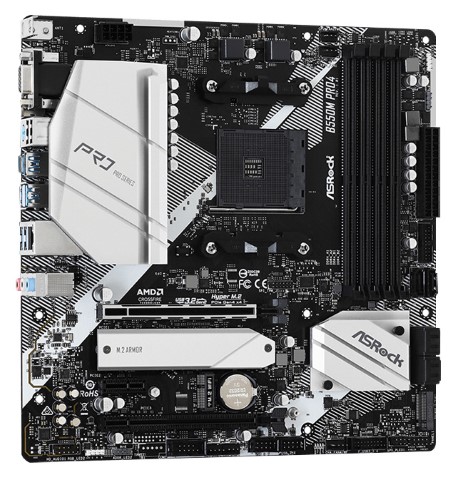
This is a continuation of the first part of our articles on how to pick the correct motherboard. It can be read standalone though, so fret not! Today we will be showing you how to pick the correct motherboard for one’s needs!
It is very important to note that I do not have any particular biases towards the different motherboard makers and have used almost all of the major ones available in most regions. Every manufacturer makes mistakes from time to time, but they also make great products all the time too!
Finally, this guide centers around AM4 and B550 in particular, but the internal logic used for each selection is actually nigh-universal. If you are buying into an Intel platform or are using older/newer parts than the ones here, while the specifics will change, the reasoning will still be helpful.
Home Theater PC for the living room?
Let’s start of easy with something you may want to make for a loved one or for your living room. I personally built one of these for my parents and I aimed for something somewhat small, efficient, cheap, and capable of driving a 4K 60 Hz TV just fine.
Let’s see here. We need a somewhat small and light build? This means that E-ATX and ATX motherboards are out. mATX or ITX are what we will need here.
A light and efficient system? Hmm, alas this means no dedicated GPU since that will weigh down the system and increase power usage and make it cost more for no actual gain. Thankfully, AMD makes the perfect product for that – APUs! The 2200G was the perfect choice at the time, but these days the 3200G may make even more sense depending on local prices.
4K 60 hz TV? This means HDMI 2.0 or above. So, I will have to check the product page and be certain that the maker supports this standard for my device.
The SSD is a cheap 250 GB NVME drive I got off a laptop. This means that the board must have an NVME slot. Actually, almost all modern ones do come with these slots, but it’s still a good thing to check just to be sure!
Lastly, price mattered a lot here and audio wasn’t important since it came from the actual TV. This means that I need a cheap board with an OK audio-solution at most.
Here is what I decided to go with when making this computer. A cheap mATX motherboard with a reasonable VRM and an OK heatsink, HDMI 2.0 support and is also small and low in power consumption. We do not need much of a VRM for a Ryzen 3 2200G, 3200G especially when we use air cooling. I can further save money by going for a board with 2 RAM DIMM slots, a cost saving measure, but not a real problem for this machine which will never need more than 16 or 32GB of RAM. By the time its users actually need more, we’d be on AM6 already!
Notice how I did not mention a B550 PCIE4 board is needed? Well that is not an issue at all for the APUs since all current cheap APUs support PCIE3 only. Plus, B550 does not officially support Ryzen 2000 and 3000 APUs so I had to go for an older board, not that it mattered in this case. Remember – just because something may be a bit older does not mean it is bad. B350/B450 is still fine if it fits the criteria and that is why it is such a nice platform.
Would I overclock on this such a cheap little board? I could, but I would not go past entry-level CPU overclocks on it. Would I put a 12 or 16-core monster on it? I actually can but it would be silly and slightly limit those processors. But for what I wanted to build, it is perfection and I am extremely pleased with this cheap board! It does what I wanted from it flawlessly! It would be a great board for an office computer too.
Mid-range B550 gaming PC for a friend with some upgrade options down the line?
Now this is a very different requirement. No longer am I limited to boards with display outputs of a certain class and I don’t really care as much for size as long as it isn’t too large to fit my friend’s ATX case.
Suddenly, audio, USB expandability, VRM quality and heatsinks matter a bit more though. So, I went through the local online stores and made a list of some promising, AM4 motherboards.
I knew the CPU we were getting for now was a Ryzen 5 3600. This is a very easy to run CPU, any A320 motherboard even can handle it stock and on air. My friend also wants a machine that can be upgraded and last as long as possible. This meant PCIE4 is suddenly another requirement for future SSDs and GPUs.
Ultimately, I found a low-priced but feature-rich board. One with a USB Type-C, on the back, PCIE4 support (B550) and would easily fit inside his case. Boards in the 120+ USD range also have a good enough VRM for a 12-core CPU in the future, as long as the person using them is on air and doesn’t overclock too much. A reasonably potent audio part and dual NVME slots plus an M.2 Wi-Fi slot are notable additions too, but they are mostly nice to haves for most people.
For the price we paid for this, I consider it an absolute bargain. Boards like this one would make 95% of gamers perfectly happy in all honesty.
Feature-rich B550-based machine?
It is time to build a higher-end machine. One of my friends wanted something more expensive that could easily take a 16-core monster 3950X on liquid cooling, have PCIE4, not have a chipset fan (so X570 was mostly out) and support Wi-Fi 6 within the full ATX form factor. There are many excellent high-end B550s and a couple of X570s even that would fulfil his requirements.
While still somewhat expensive, a higher end B550 board would not struggle with an overclocked 3950X under water cooling, would be feature rich, well-built and provide excellent audio and built-in Wi-Fi 6! The advanced Intel I225-V 2.5Gb Ethernet and Bluetooth are also excellent features and BIOS flashback is something I swear by. Seriously, if its 190 or more USD/EUR, it should come with BIOS flashback no matter what! One decent rule of thumb I have for most users though is – its usually not the absolute top board that is the best high-end choice, but the one under it. It has almost the same features and an insane VRM anyway.
The client is very pleased with their computer and they should be – it’s one badass piece of equipment and pairs wonderfully with the Ryzen 9 3950X they now own.
What about an even smaller powerhouse, an ITX build?
Alas, I am yet to build an ITX machine based on AM4. I never had to. However, if I did and it was a high-end machine with a 3900X/3950X, I would need to do some serious research.
With ITX there is less space to create a great VRM and many chipset features cannot be implemented due to space constraints. For many boards, the B550 example is functionally identical to the X570 one. This board type is more limited than ATX or mATX and I personally prefer it for sleeper powerhouse PCs or more exquisite HTPCs. With ITX, there is a bit of a revolution happening right now so do keep an eye out, companies often announce new ones all the time!
Extra tips
- Remember, air cooling can aid VRMs and motherboard heatsinks a bit since it moves air around them too, unlike liquid cooling. Top-down coolers like the Wraith Prism, Wraith Spire or Noctua NH-C14S are even better for VRM and RAM cooling.
- Do not forget that price is a feature too! There is no need to spend more on features you will never use. I personally do not need Wi-Fi or Bluetooth, so I buy versions of boards without it as they are cheaper. I also do not need lots of SATA connections or USB Type-C internal connections, so if I can save a buck, I will. But if you need them – of course look out for those features!
- Unless you have specific wants in terms of looks or perhaps the actual BIOS and its layout – there is no need to consider the manufacturer too much since they all make boards across a very wide range of price points. Sometimes, one has a better or a worse product (overall) at a certain price point, true, but a sale or price reduction can suddenly bring them back into the discussion.
- Do not discount old B350 – X470 boards. Or the X570 and A520 class. They too can be excellent value. But do make sure to check the compatibility lists and BIOS versions before committing if you are using a CPU outside those board’s generation! Thankfully, most stores or owners of such boards can and will change a BIOS or inform you about it at least for free 😊!
- If you have gigantic RAM sticks with massive heatsinks and fat GPUs with thick backplates – do note the space between the DIMMs and the main PCIE slot. It’s possible for the RAM to slightly scratch the backplate in such a scenario. Nothing dangerous, it won't cause any harm. Just me saving you from a possible annoyance!
COVID has really messed up supply for everyone this year so if the board you have been longing for isn’t available where you live, I recommend waiting for a bit (perhaps ask the stores when they will restock) and then just going for the closest equivalent.
I hope that this article shows the internal logic that I personally use when looking for a motherboard. Price is a very important thing for me, but so are features, sizes, and long-term outlook for the platform.
The articles content, opinions, beliefs and viewpoints expressed in SAPPHIRE NATION are the authors’ own and do not necessarily represent official policy or position of SAPPHIRE Technology.
























